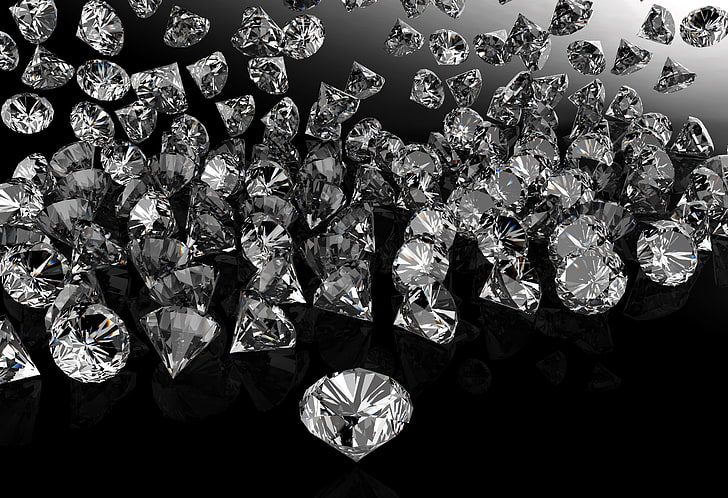When it comes to jewelry, few pieces are as timeless and versatile as diamond studs. Whether for a casual outing or a formal event, these elegant accessories can elevate any outfit. In this article, we delve into the world of lab-created diamonds, exploring their benefits, unique qualities, and how they stack up against natural diamonds.
Understanding Lab-Created Diamonds
Lab-created diamonds are synthetic diamonds produced in controlled environments using advanced technology. Unlike natural diamonds, which take billions of years to form in the earth’s crust, lab diamonds can be created in a matter of weeks. This process involves replicating the natural conditions under which diamonds develop. As a result, lab diamonds possess the same physical, chemical, and optical properties as their natural counterparts, making them an excellent choice for those seeking quality and value.
The Process of Creating Lab Diamonds
The creation of lab diamonds occurs primarily through two methods: High Pressure High Temperature (HPHT) and Chemical Vapor Deposition (CVD).
HPHT mimics the natural diamond formation process applying extreme pressure and temperature to carbon. This method produces diamonds that are nearly identical to those found in nature.
CVD, on the other hand, involves using a gas mixture to deposit carbon atoms onto a substrate, gradually forming a diamond. Both processes result in diamonds that are optically flawless and free of the imperfections commonly found in mined stones.
Why Choose Lab-Created Diamonds?
Opting for lab-created diamonds comes with a plethora of advantages. First and foremost is affordability. Lab diamonds are typically 20-40% less expensive than their natural counterparts. This price difference allows consumers to purchase larger or higher-quality diamonds without breaking the bank.
Moreover, lab diamonds are an environmentally friendly choice. The mining of natural diamonds often leads to significant environmental degradation and ethical concerns, including labor practices. In contrast, lab diamonds reduce the ecological footprint associated with traditional diamond mining. Choosing lab-created options promotes a more sustainable future.
Quality of Lab Diamonds
One of the most significant misconceptions surrounding lab diamonds is their quality. Consumers often wonder if these diamonds can match the brilliance and sparkle of natural diamonds. The answer is a resounding yes. Lab diamonds are graded using the same criteria as natural diamonds: the Four Cs—cut, color, clarity, and carat weight.
Cut: A well-cut diamond exhibits excellent light performance and brilliance. Lab-created diamonds are cut to precise standards, often resulting in more symmetry and proportions than natural diamonds.
Color: Lab diamonds can range from colorless to shades of yellow and brown. Most lab diamonds are graded near colorless, providing the stunning appearance that many consumers desire.
Clarity: Lab diamonds are frequently flawless or nearly so. This means fewer inclusions and blemishes, offering a purer appearance.
Carat Weight: Lab diamonds can be produced in larger sizes, allowing for bigger and more impressive pieces of jewelry without the exorbitant price tag.
Choosing the Perfect Lab Diamond Studs
When selecting lab diamond studs, there are several factors to consider to ensure you find the perfect pair.
Shape: Lab diamonds come in various shapes, each offering a distinct look. The most popular shapes for studs are round and princess cuts. The round cut is renowned for its brilliance, while the princess cut offers a more modern and angular appearance.
Setting: The choice of setting can significantly impact the overall aesthetic of the diamond studs. Common settings include prong, bezel, and halo settings. Prong settings allow maximum light to enter the diamond, enhancing its brilliance. Bezel settings provide a sleek, contemporary look, while halo settings add extra sparkle surrounding the central diamond with smaller stones.
Size: When it comes to stud earrings, size matters. The carat weight will determine how noticeable the earrings are. While larger stones make a statement, smaller stones can be more versatile for everyday wear.
Caring for Your Lab Diamond Jewelry
To maintain the beauty of your lab diamond studs, proper care is essential. Regular cleaning is key to keeping them sparkling. A gentle solution of mild dish soap and warm water is effective for cleaning diamonds. Use a soft brush to remove any dirt or oil buildup.
Storing your lab diamond jewelry in a fabric-lined box or pouch will prevent scratches and damage. It’s also wise to have your earrings inspected regularly a professional jeweler to ensure the settings are secure.
Lab Diamonds vs. Natural Diamonds: A Side--Side Comparison
Understanding the differences between lab-created and natural diamonds is crucial for informed decision-making.
Origin: Lab diamonds are created in a controlled environment, while natural diamonds are formed over billions of years in the earth’s mantle.
Price: Lab diamonds are typically more affordable, offering a budget-friendly option without sacrificing quality.
Ethics: Lab diamonds provide an ethical alternative, eliminating concerns related to conflict diamonds and the environmental impact of mining.
Appearance: Both lab and natural diamonds can be visually indistinguishable, as they share the same properties and characteristics.
Conclusion: The Allure of Lab-Created Diamond Studs
In summary, lab-created diamond studs present an attractive and sustainable option for jewelry lovers. With their unmatched quality, affordability, and ethical benefits, lab diamonds are revolutionizing the way consumers view fine jewelry. Investing in a pair of lab diamond studs not only enhances personal style but also supports a more responsible approach to luxury.



